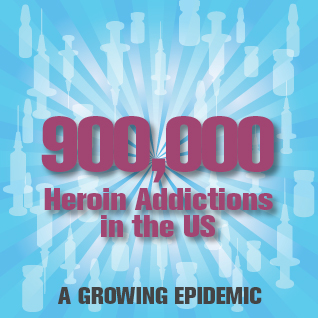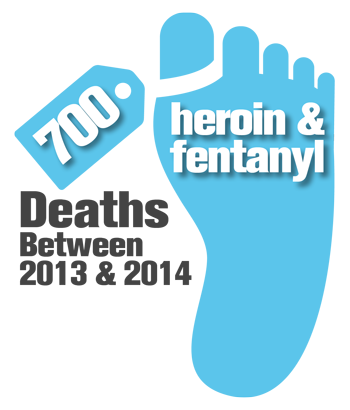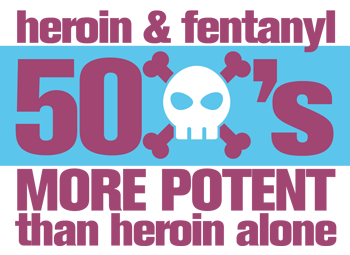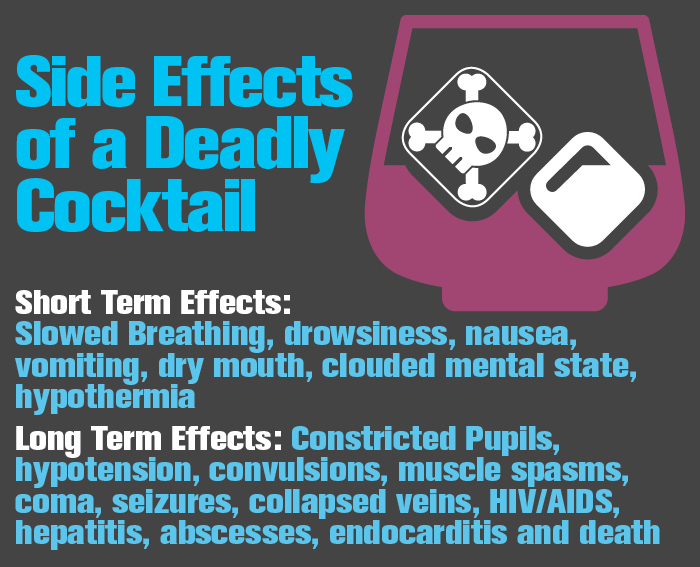Public Health Warning
FENTANYL AND HEROIN’S FATAL EFFECTS

American society has been in a devastating tailspin due to the substance abuse epidemic. Both urban and suburban communities have become war zones in the constant battle against drugs. Heroin has become one of the most sought after, popular and deadly illicit drugs in this country.[1] With its powerful potency and cheap price tag, addiction to the substance continues to rise at a rapid pace. In the United States, there are approximately 900,000 people addicted to heroin.[2]
Due to increasing tolerances to the substance, individuals have been hastily experimenting on how to develop an even more potent form of heroin. They have succeeded. The Substance Abuse and Mental Health Services Administration (SAMHSA) recently released a public health warning, alerting the health community and the general population about the devastating, life-threatening consequences of abusing heroin laced with fentanyl.[3]
DEATH TOLL RISES
SAMHSA’s warning highlighted that in the past week, seven deaths and over 82 overdoses in the Chicago area have been attributed to the deadly cocktail. Across the eastern seaboard, from Massachusetts to Philadelphia, overdoses from heroin laced with fentanyl have been reported.
THE HISTORY OF HEROIN AND FENTANYL
Heroin has been present in American society since the early 1800’s when it was used for medicinal purposes in elixirs and tonics. In 1906, the Pure Food and Drug Act was the first piece of legislation in a series of many, initially regulating manufacturing and distribution of the drug to banning the substance completely.[4]
Heroin’s constant strangle hold on the American general public began in the 1950’s and has since steadily increased.
 Heroin’s constant strangle-hold on the American general public began in the 1950’s and has since steadily increased.[5] Heroin is a white, powdery substance derived from the opium poppy plant. This highly addictive and illegal substance is predominantly harvested and manufactured in Asian and South American countries, such as Columbia and Mexico. Heroin can be smoked, injected or snorted. A substance that originally was most commonly injected, addicts are now turning to snorting heroin due to the stigma associated with injection.[6]
Heroin’s constant strangle-hold on the American general public began in the 1950’s and has since steadily increased.[5] Heroin is a white, powdery substance derived from the opium poppy plant. This highly addictive and illegal substance is predominantly harvested and manufactured in Asian and South American countries, such as Columbia and Mexico. Heroin can be smoked, injected or snorted. A substance that originally was most commonly injected, addicts are now turning to snorting heroin due to the stigma associated with injection.[6]
 Fentanyl, a synthetic opiate, is an anesthetic drug that is commonly used to combat severe pain. Usually it is administered through a patch, injection or ingested in lozenge form.[7]
Fentanyl, a synthetic opiate, is an anesthetic drug that is commonly used to combat severe pain. Usually it is administered through a patch, injection or ingested in lozenge form.[7]
Distributors are now “cutting” heroin with fentanyl to increase its effects. The Drug Enforcement Administration (DEA) announced in March that approximately 700 deaths between 2013 and 2014 have been attributed to heroin and fentanyl.[8] The National Council on Alcoholism and Drug Dependence (NCADD) stated that clandestine labs, most recently linked to Mexico, are creating the lethal substance. The heroin and fentanyl substance is 30 to 50 times more potent than heroin.[9]
LIFE ALTERING SIDE EFFECTS OF A DEADLY COCKTAIL
 Heroin has a wide range of short and long-term side effects. This destructive substance literally changes the physical structure of an individual’s brain. Then ensues hormonal and neuronal imbalances, resulting in a lifetime of irreversible consequences.[10]
Heroin has a wide range of short and long-term side effects. This destructive substance literally changes the physical structure of an individual’s brain. Then ensues hormonal and neuronal imbalances, resulting in a lifetime of irreversible consequences.[10]
SAMHSA explains that after heroin is taken users can feel a variety of effects. Soon after it has been ingested individuals can experience slowed breathing, drowsiness, nausea, vomiting, dry mouth, clouded mental state, hypothermia or enter into a coma-like state.
SAMHSA goes on further to describe the long-term repercussions that can occur from one time or repeated abuse. Constricted pupils, hypotension, convulsions, muscle spasms and coma are common. Individuals using heroin are also at greater risk for HIV/AIDS, hepatitis, abscesses, collapsed veins, seizures, endocarditis and death.
DEMOGRAPHIC AND GEOGRAPHIC SPREAD OF THE DRUG
What was once a substance primarily used in urban areas in a lower economic state, has now invaded the suburbs. A study conducted by researchers at Yale University reported that one of the largest groups using heroin today is suburban mothers.[11] The researchers concluded that the heroin epidemic has continually spread and has reached new demographics due to the prescription painkiller crisis.
Heroin has become such a widespread issue that law officials, first responders and civilians have begun carrying Narcan.
When a patient is in pain, most times physicians will prescribe them a type of painkiller. Vicodin and OxyContin are just two common prescription opiates being made available to countless individuals in the United States. NBC News reported that in the past year, over 12 million Americans abused prescription painkillers.[12]
NBC News stated that as individuals began taking the pills, their tolerance then increased. When their prescription was no longer valid and an addiction had developed, individuals realized that buying the same substances on the street can be costly. Due to this, many turn to heroin.
Yale University’s research reports that when an individual’s prescription opiate addiction becomes too expensive, heroin becomes an alternative. Heroin is virtually easily found and cost effective. A bag of heroin can range from $4 to $10, which is less than half the cost of a non-prescribed pill.[13] Heroin has become such a widespread issue that law officials, first responders and civilians have begun carrying Narcan. Narcan is an antidote for an overdose from an opiate, like heroin, and can be administered intranasally or intravenously.[14] With over 9 million people addicted to heroin worldwide, the drug’s effects are quickly becoming known.[15]
In an effort to combat addiction, more specifically the heroin epidemic, the White House has become involved. President Barack Obama has recently released a $5 million plan designed to thwart heroin’s expansion by combating trafficking and usage of the illegal substance. This new initiative will focus on promoting treatment and rehabilitation for individuals plagued by this addiction.[16]
TREATMENT
Treatment is a necessity in order for an individual to achieve sobriety. Individuals must acknowledge and address their addiction to properly overcome it.
Behavioral Health of the Palm Beaches is a state-of-the-art facility specializing in rehabilitation. With a comprehensive, holistic approach to treatment, our facility has boasted over two decades of high, long-term success rates. With a variety of specialized programs, there are a multitude of treatment options for each patient. Behavioral Health of the Palm Beaches has a unique in-house research team dedicated to discovering and examining which treatments are best to implement at our facility. We only use therapies that are proven and evidence-based. Allow our team of renowned physicians and therapists to help you regain your life. For more information, please call (888) 432-2467.



